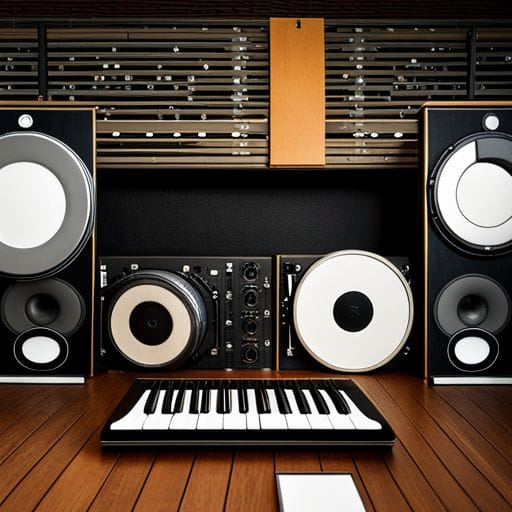Producing Jungle and Drum n Bass: High-Speed Breakbeats and Sub Bass

What are the essential elements needed for producing Jungle and Drum n Bass music?
Generating universal high-energy vibes in music isn’t a feat for the faint of heart. It requires a deep understanding of rhythm, bass, and beats. Some genres masterfully incorporate these elements into high adrenaline music, and prominent amongst them are Jungle and Drum n Bass.
Understanding Jungle and Drum n Bass
Jungle and Drum n Bass are electronic music genres that originated in England in the early ’90s. Often interchangingly used due to their similar origin, Jungle and Drum n Bass have distinct features that make them unique. Typically running at breakneck tempos of 160-180 beats per minute, they are known for their rapid, breakbeat drum patterns and heavy, sub-bass lines.
The Art of High-Speed Breakbeats
Arguably, the backbone of Jungle and Drum n Bass is the fast tempos and complex rhythmic patterns, commonly known as breakbeats. These high-speed breakbeats originally stemmed from funk and soul music but were sped up, chopped, and rearranged to produce the frenetic pace that defines the genre.
Producing breakbeats begins with selecting percussion samples, assembling them into a loop, and setting that loop to play at high speed. For example, the “Amen Break”, a 6- to 7-second drum solo from The Winstons’ “Amen, Brother”, is considered the most sampled and looped drum break in Jungle and Drum n Bass.
The Power of Sub Bass
Complementing the high-speed breakbeats are deep, raw, and pulsing sub-basslines, which serve to anchor the music and instill a sense of energy and urgency. Typically synthesized electronically, sub-bass frequencies are in the 20-60 Hz range, providing a heavy, almost visceral ‘rumbing’ effect to the listener.
To produce potent sub-bass, producers often use a sine or triangle waveform on a synthesizer, pitched down to sub-bass frequencies. Tasteful use of filters, EQ, and saturation can further refine and enhance the sub-bass, moulding a guttural and powerful sonic output.
Tips on Producing Jungle and Drum n Bass
If you’re looking at producing Jungle and Drum n Bass, here are some tips:
- Master Sampling: Get a good grasp on using and manipulating audio samples, as the genre heavily relies on this technique.
- Drum Programming: Understanding how to program fast, intricate drum patterns is essential to catch listeners’ imagination.
- Understand Frequency Spectrum: Since the sub-bass occupies the lowest frequencies, awareness of the frequency spectrum ensures other elements don’t clash with it.
- Know your genres: A lot of the creativity in this genre comes from mixing and melding different styles and subgenres, so a broad musical knowledge helps!
Producing Jungle, and Drum n Bass is indeed an art— the breakneck tempos, complex rhythms, and throbbing basslines demand both a high skill level and a keen artistic sense. But with understanding, practice, and patience, you’ll be able to create captivating high-speed breakbeats and hair-raising sub-bass, propelling your listeners into a world of energetic and immersive music.
